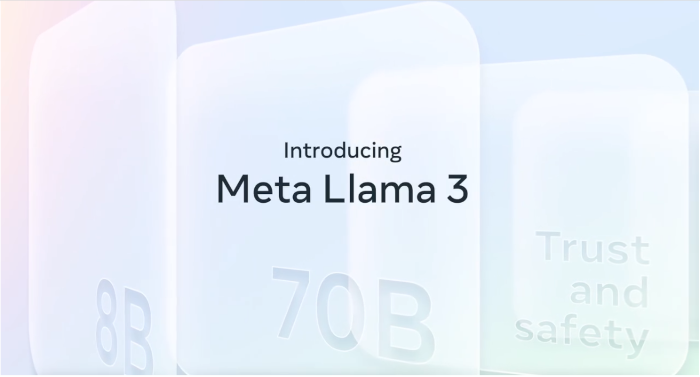Llama 3 Release Overview

Introduction to Llama 3
Meta AI has unveiled its latest achievement, Llama 3, touted as the most advanced open model to date. This new release marks a significant upgrade from its predecessor, Llama 2, and sets a new benchmark for open models in the AI landscape. For more details, visit Introducing Meta Llama 3.
Enhancements in Llama 3
-
Expanded Training Data: Llama 3 is trained on a dataset that is seven times larger than that of Llama 2.
-
Increased Context Length: The model supports a doubled context length of 8,000, enhancing its understanding capabilities.
-
Enhanced Language Encoding: It utilises a larger token vocabulary of 128,000 tokens for more efficient language encoding.
-
Safety and Responsibility Tools: Features such as Llama Guard 2 and Code Shield are incorporated to ensure safe and responsible usage.
Model Variants and Applications
Llama 3 is available in different configurations:
-
Pre-trained Models: Offered with 8 billion and 70 billion parameters.
-
Instruction Fine-Tuned Models: These versions are equipped with chat capabilities.
-
Local Deployment: The 8 billion parameter models are optimized for deployment on resource-constrained systems. For more information on local deployment, visit ollama.
Benefits of Open Source Models
Comparative Performance Studies
Recent research has compared the effectiveness of large language models (LLMs), both proprietary and open-source. Notable findings include:
-
Superior Performance of Large Models: Models like ChatGPT generally outperform smaller models in various benchmarks, particularly for individual ad-hoc queries.
-
Enterprise Applications: For corporate use, smaller open-source models like Mixtral-8x7B have shown to deliver comparable, if not superior, performance when integrated with context retrieval tools like RAG. For further reading, see RAG makes LLMs better and equal.
Advantages of Open Source Models for Enterprises
-
Cost Efficiency: Small, open-source LLMs can match the performance of larger models at a significantly lower cost.
-
Internal Hosting: Enterprises have the flexibility to host LLMs internally, which allows for greater control over models and data without sacrificing performance or violating policies. This is particularly important where sensitive data is involved.
-
Investment Returns: While large LLMs continue to make strides in research, investing in teams, infrastructure, and specialized tools offers a higher return on investment.
-
Inference Speed: Smaller models tend to run 2-3 times faster than their larger counterparts during inference.
Future Prospects
With Llama 3, Meta AI aims to continue enhancing performance while still giving users the benefits of speed and control, building upon the model's existing advantages for a wide range of applications.